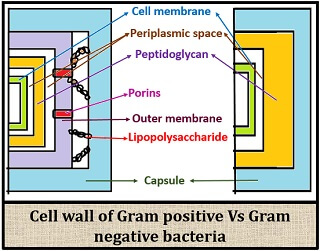

OMVs have been associated with cytotoxicity, the invasion of host cells, membrane fusion, the production of biofilms, and the transfer of viruses, DNA, receptors and antibiotic-resistance proteins 21, 22, 23, 24. OMVs carry varied cargo, including virulence factors, adhesins, DNA, RNA, communication compounds, toxins, immunomodulatory factors and nutrient-scavenging factors. EVs from Gram-negative bacteria originate from the outer membrane and are thus usually referred to as outer-membrane vesicles (OMVs) 20 ( Box 1). In recent decades, research into EVs from Gram-negative bacteria increased substantially, but there was little to no EV-related research with Gram-positive bacteria, mycobacteria or fungi. The existence of EVs produced by Gram-positive bacteria was not mentioned in the literature until 1990 (Ref.

The existence of EVs across all three domains of the tree of life suggests that vesicular transport is a universal phenomenon.īacterial EVs were first reported in Escherichia coli in the 1960s, and the presence of fungal EVs was first proposed in 1973 (Refs 14, 15, 16, 17, 18). In the literature, EVs from Gram-positive bacteria and from mycobacteria are usually called membrane vesicles for clarity, we refer to all extracellular vesicles as EVs, including those that have elsewhere been referred to as membrane vesicles. EVs consist of lipid-bilayers that form lumen-containing spheres ranging in size from 20 nm to 500 nm in diameter, and they are produced by eukaryotes, archaea and bacteria 13. In a variety of both prokaryotic and eukaryotic microorganisms, many of these cellular factors have been associated with extracellular vesicles (EVs), implying that vesicles may serve as an export system 1, 2, 3, 4, 5, 6, 7, 8, 9, 10, 11, 12. The secretion of proteins, molecules, polysaccharides and other factors is a vital process in all living organisms. By learning how these microorganisms use EVs, we hope that researchers will gain insight into pathogenesis, therapeutics and vaccines. Research into EVs produced by microorganisms with thick cell walls is a very young field. Interaction of EVs with the host is specific to the microorganism from which the EVs were produced and is based on the lipid content and cargo of the EVs. For example, Cryptococcus neoformans EVs carry the capsular polysaccharide glucuronoxylomannan, which is an important virulence factor. It involves a simple staining procedure.Extracellular vesicle (EV) research in Gram-positive bacteria, mycobacteria and fungi was neglected until recently, owing to the presumption that vesicles could not traverse the thick cell walls found in these organisms.ĮVs are now understood to be produced by all types of microorganism, including those with thick cell walls, and are biologically active.ĮVs from bacteria, mycobacteria and fungi contain virulence factors, such as toxins, that are involved in pathogenesis and elicit strong host immune responses. The first way, which is particularly relevant in medicine, is related to the outer covering of the cell. Some types also have a third outer layer called a capsule.īacteria can be separated into categories based on various different features. Each cell is generally contained within a cell membrane, which itself is contained within a protective cell wall. This means that their genetic material is ‘loose’ within each cell. Although, the colonies they form are visible.īacteria are prokaryotic, which means that they exist as single cells, although they form groups known as colonies. Most individual bacterial cells – an individual ‘bacterium’ – are too small to be seen with the human eye. Various sources suggest there may be as many as one trillion species – although the vast majority of these have not yet been discovered. They are one of the first life forms to exist on Earth and have been around for approximately three billion years. Public Engagement and Patient Support (PEPS) Committeeīacteria are very small (usually single-cell) organisms.Antibiotic resistance in the environment.Antibiotic resistant bacteria in healthcare.


 0 kommentar(er)
0 kommentar(er)
